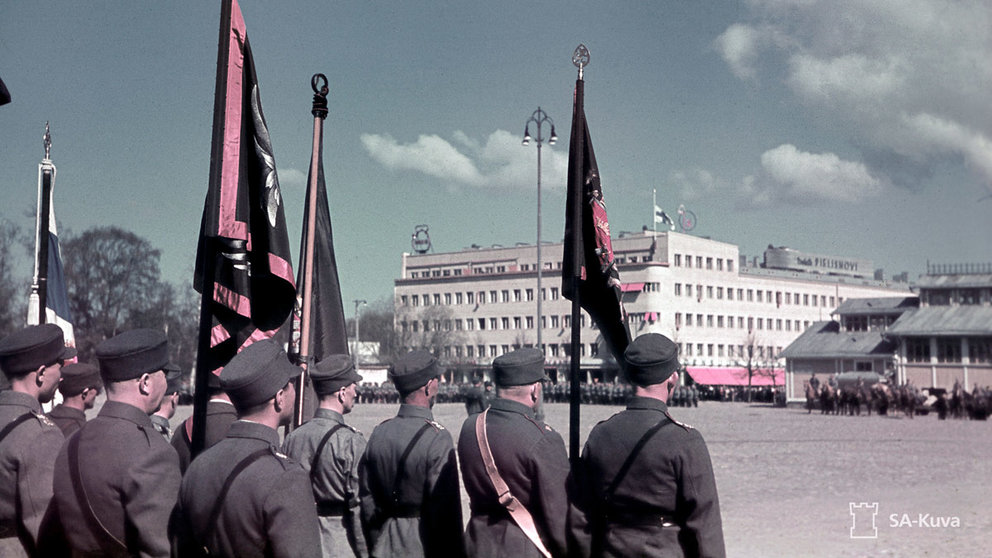On the eve of the Winter War in 1939, the ambience at the Kremlin was calm and relaxed.
Joseph Stalin and his inner circle were in a festive mood. The war had not started yet, but they were celebrating with copious amounts of vodka as if they had already won.
Stalin had reasons to believe that annexing their tiny neighbour would be a piece of cake.
Former Soviet Premier Nikita Khrushchev wrote in his memoir: "All we had to do was raise our voice a little bit and the Finns would obey. If that did not work, we could fire one shot and the Finns would put up their hands and surrender. Or so we thought…”
What happened in the battlefield, however, was a far cry from what Stalin had expected.
Below are some fundamental weaknesses that took a toll on Stalin’s Finnish mission.
1. Believing that one size fits all
Finns were fighting in their own land.
It was their home. They were familiar with every little corner, every nook and cranny of their surroundings.
In particular, their eastern border was naturally a very strong defence line.
The terrain included deep forests and lakes stretching hundreds of miles with a network of narrow roads. Making advances in such an area proved to be a big problem for the mechanised Soviet forces.
Instead of making attacks easy, their artillery assets and tanks became almost a burden.
The Red Army was familiar with war operations on large tracts of plain lands. They did not have any training in how to launch attacks in terrains as forested as those in Finland.
Instead of doing the homework before waging the war, they chose to rely on modern technology. And it was too late to realise that what worked for the Germans on Poland’s plain grounds would be utterly useless in Finnish forests.
As Marshal Mannerheim remarked: "It was a characteristic mistake of the Red high command to start military operations without paying necessary attention to the basic factors –the character of the theatre of war and the strength of the enemy– in the war against Finland.”
2. Not contemplating the Arctic cold harshness
Stalin ordered the invasion at the wrong time.
He did not realise that his Red Army would fight in a land that would soon turn into a frozen hell. The winter of 1939-40 was not only cold.
It was extremely severe.
Temperatures regularly dropped to such low levels that one had to face numerous challenges to even lead a normal everyday life, let alone fighting a full-fledged war. Forested lands were under huge piles of snow. The Soviets were clearly ill-equipped for such winter conditions.
The short winter days provided only a few hours of daylight. Once those hours were over, Finland plunged into eerie darkness.
This not only made the infantry battles difficult but also spelled troubles for the Soviet planes. It was a challenge to target enemies on the ground in the dark. The balls were now in the court of Finnish troops who shot down almost 1,000 Soviet aircraft during the 105-day war.
3. Centralising command
The leadership doctrine that involved political commissars in military decision-making was a big bane for the Soviet armed forces.
The command structure was so rigid that every order in the battlefield first had to be approved by the commissars. The field commanders could not make decisions on whether to use a tactic without consulting the officers of higher ranks, who then had to obtain permission from the commissars.
Such a strict set-up in the chain of command led to unnecessary delays in situations that demanded decisiveness.
The centralisation of command also resulted in a lack of quick initiatives on the part of the Soviet forces who were fighting in bone-chilling cold.
“Contrary to his [Soviet troops] Finnish adversary, he was a mass fighter who was incapable of independent action when out of contact with his officers or comrades. The fact that surrounded units refused to surrender in spite of cold and hunger was largely due to the political commissars,” Mannerheim wrote in his memoir The Memoirs of Marshal Mannerheim.
After the war, political commissars were abolished as part of large-scale reforms in the Red Army. Old-style ranks, such as the rank of General, were re-introduced.
4. Blindly trusting the informers
Stalin wanted to “liberate” the Finns.
His spies told him that the commoners in Finland had harboured a feeling of dissatisfaction and were ready to embrace communism.
However, nothing could be further from the truth.
Also, the Soviets were already annoyed with the Finns, who did not accept communism following independence in 1917. The relationship between the countries had been like a war of nerves since then.
The Soviets regretted that they had given Finland its independence, but they also thought subversive measures and propaganda might help establish control over the Finns again.
Stalin thus thought the invasion would be part of the effort to set the Finns free.
However, the Finns had no wish at all to be rescued by the philosophy of communism. In fact, they had developed a feeling of intense dislike for this ideology.
Their outlook towards life were markedly different from the Soviet way of thinking. They believed they had established superiority over the Soviets in terms of culture and living standards. They had no wish to be relegated to the Soviet standard.
Therefore, the Soviet troops were not welcomed with open arms. Instead, they faced a nation united in determination to fend off any attack on their sovereignty.
As US historian William R Trotter wrote in his book A Frozen Hell: The Russo-Finnish Winter War of 1939-1940: “The valour of ‘Brave Little Finland’ made the vaunted Red Army look like a giant with feet of clay, and inflicted upon Joseph Stalin the worst humiliation of his career.”
*NOTE: This article is the last of an 8-part series on the Winter War to be published from 30 November -the day the conflict started- til 13 March, when it ended.












